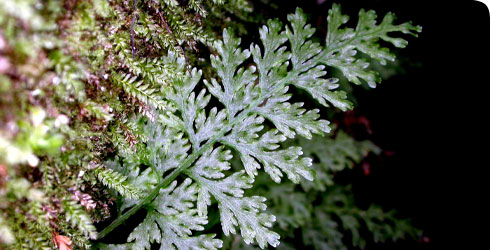Vandenboschia speciosa (Killarney fern)
Vandenboschia speciosa known as the Killarney Fern is one of the rarest and most celebrated species in the British flora.
The Killarney Fern is highly sought after and there is much secrecy surrounding its locations because of its beauty and great rarity.
A prized horticultural trophy in the Victorian period Killarney Fern is now a conservation icon.
The largest of the European Filmy-ferns, Vandenboschia speciosa was described from the Canary Islands but was actually first found in a small cave near Bingley, West Yorkshire in 1724, where it still survives.
The gametophyte (sexual) generation of Vandenboschia speciosa has a unique biology a discovery made quite recently by Museum botanist Fred Rumsey (Rumsey et al., 1990).
Species detail

Gametophyte generation of Vandenboschia speciosa at Bell Bank, Bingley, Yorks. © F Rumsey
Gametophyte generation
- is filamentous
- produces gemmae - small dispersive vegetative propagules.
- persists indefinitely - ephemeral in most Ferns
- spreads locally
- survive in sites far beyond the tolerances and hence range of the sporophyte,
The nature of the gametophyte generation poses many questions:
- When was this broader distribution achieved?
- Can these gametophytes still produce sporophytes?
- Will global warming result in changes where gametophytes, or the sporophyte can survive?
-

Morphology
Find out more about the structure and distinguishing features of Vandenboschia speciosa the Killarney Fern.
-

Taxonomy
Read about the genus Vandenboschia and the wider family to which the Killarney fern belongs to. Get a genetic background for this species.
-

Distribution and habitat
Discover the areas where the Killarney fern is found, including where it was discovered. Learn about the types of habitat it typically grows in.
-

Conservation
Find out the conservation status of the Killarney fern, threats to its survival and the legislation in place to protect the species.
-

References
Get reference material for Vandenboschia speciosa.
-

Biology
Learn about the size to which patches of the Killarney fern can grow and the conditions that affect its growth patterns.
Images

Vandenboschia speciosa (Killarney fern) - Arran
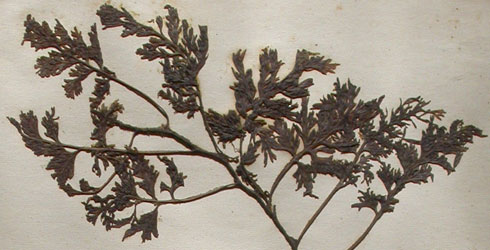
Vandenboschia speciosa was first found near Bingley in Yorkshire by Dr Richard Richardson in 1724. His specimens still survive in several British herbaria, including here at the Museum.
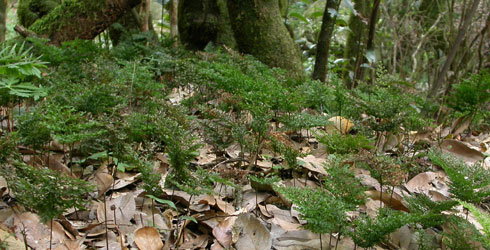
Killarney fern – laurel woodland, N.W. Madeira.

Three contrasting habitats for the plant all on the Isle of Arran.

Vandenboschia speciosa
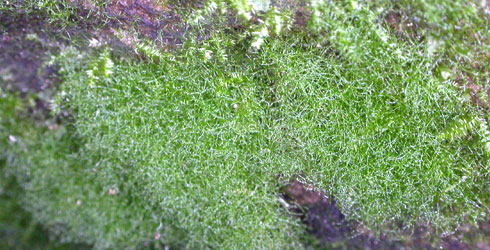
Gametophyte at Bell Bank, Bingley, Yorks.
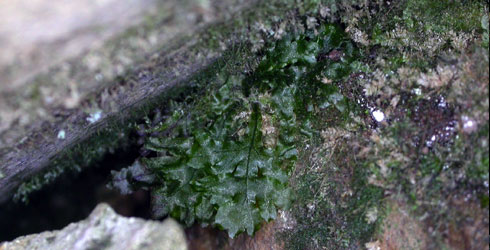
Newly developed sporophyte, Arran.
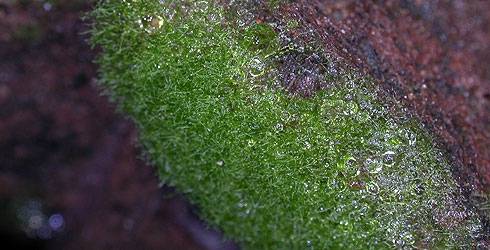
Typical view of gametophyte – caught in torch-light, a bright dark-green felty blob hanging from the roof of a small sandstone cave, Arran.
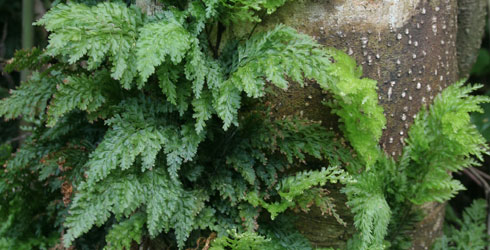
Killarney Fern as a liane – Azores.
Synonym
Trichomanes speciosum Willd.
About the author

Dr Fred Rumsey
Botanist - Identification and Advisory Service, Angela Marmont Centre for UK Biodiversity.
Toolbox
Glossary
Ferns alternate between two generations
Gametophyte generation
is a multicellular haploid structure, producing male or female gametes (or both), by mitosis (cell division). The fusion of male and female gametes produces a diploid zygote, which develops by repeated mitotic cell divisions into a multicellular sporophyte.
Sporophyte generation
is the product of the fusion of two haploid gametes, its cells are diploid, (containing two sets of chromosomes). The mature sporophyte produces haploid spores by a process called meiosis storing them in sporangia. The spores are released from the sporangia, germinating and developing into a haploid gametophyte.
